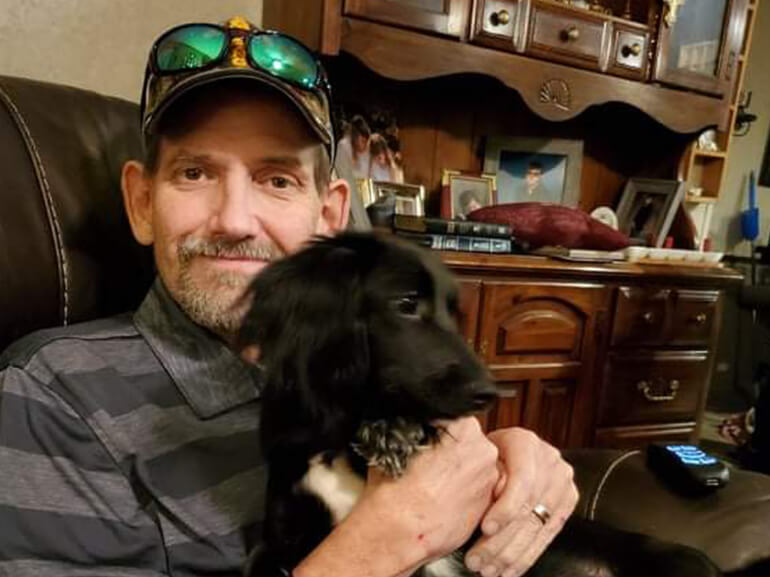Bryan's Story

Bryan Jones is a 52-year-old husband, father and owner of a heating, ventilation and air conditioning business in Homer, Louisiana. Due to end stage liver disease and frequent hospitalizations, Bryan was forced to shut down his business. About six months after making that hard decision, Bryan received news that he would be placed on the liver transplant recipient list at Ochsner Medical Center. He began extensive testing for transplant candidacy. A few short weeks later, he received a call that a suitable liver was available and underwent surgery.
Prior to receiving the transplant, Bryan experienced significant muscle loss due to weakness and debility. After the transplant, Bryan lost approximately 60 pounds due to having to stay in bed for several weeks during recovery. Once he was medically stable, he transferred to Ochsner Rehabilitation Hospital for further recovery.
Upon admission, Bryan required the assistance of two people and the use of a transfer board to get into a wheelchair. Due to significant weakness from his prolonged acute care hospital stay, he was unable to stand in the parallel bars even with the assistance of three people. He also required extensive assistance to shower, get in and out of bed and was unable to safely use a toilet.
With the help of physical therapists, Bryan practiced using the transfer board and progressed to being able to use it with one person standing by and assisting him with the setup of the board. On his fifth day of therapy, he was able to stand up fully using the parallel bars for support and the assistance of two people. Soon, Bryan was able to perform slide board transfers by himself and walk with a walker, with the wheelchair right behind him for safety. He still required significant assistance to stand up, but his therapists kept practicing until he gained enough strength to do it himself.
In tandem, Bryan and his occupational therapy team worked to improve his strength and endurance. To increase his arm strength, he lifted weights and used an inclined ladder that helped improve his range of motion. For endurance training, Bryan used the SCIFIT reclined, stationary bike at varying levels of difficulty. His occupational therapists also deployed specialty adaptive equipment, such as a dressing stick and sock aide to improve his independence with dressing.
Unfortunately, Bryan soon experienced a setback. After two weeks in the rehabilitation hospital, he returned to Ochsner Medical Center to be evaluated by the liver transplant team due to low-grade fever and concern for infection. He spent approximately two weeks there before returning to Ochsner Rehabilitation Hospital to continue his rehabilitation journey.
During his second stay, Bryan made significant gains. He was able to stand with some assistance and a rolling walker and continued to work with occupational therapy to improve his strength and endurance. Soon, he was independently standing with a walker and could also stand without a walker with supervision. Additionally, he was able to become independent with showering, toileting and dressing.
Bryan credits his family for giving him the motivation he needed to complete his recovery journey, especially his wife, Nicole. Although she was not able to stay with Bryan because of COVID-19 safety restrictions, Nicole played a huge role in providing emotional support. She stayed at nearby apartments available for out-of-area patients and their families during post-transplant care. Bryan said that he could not have completed his journey without the support he received from his family, including daily FaceTime calls.
Bryan recalled that his therapists helped him achieve his goals by pushing him to progress past his current functional status, at a reasonable pace. Bryan’s advice to other patients is “you’ve got to push yourself beyond what you are comfortable with, but not so far that you get down and depressed because you’re not accomplishing what you want to accomplish. It just takes time.”
Nearly two weeks after his second admission, Bryan discharged home to his family, able to independently stand up from his wheelchair, walk more than 200 feet using a walker and go up and down stairs.
Several months later, Bryan provided an update saying he is now walking without any assistance. Since discharge, he’s been attending outpatient rehabilitation and should be wrapping that up in a couple of weeks.